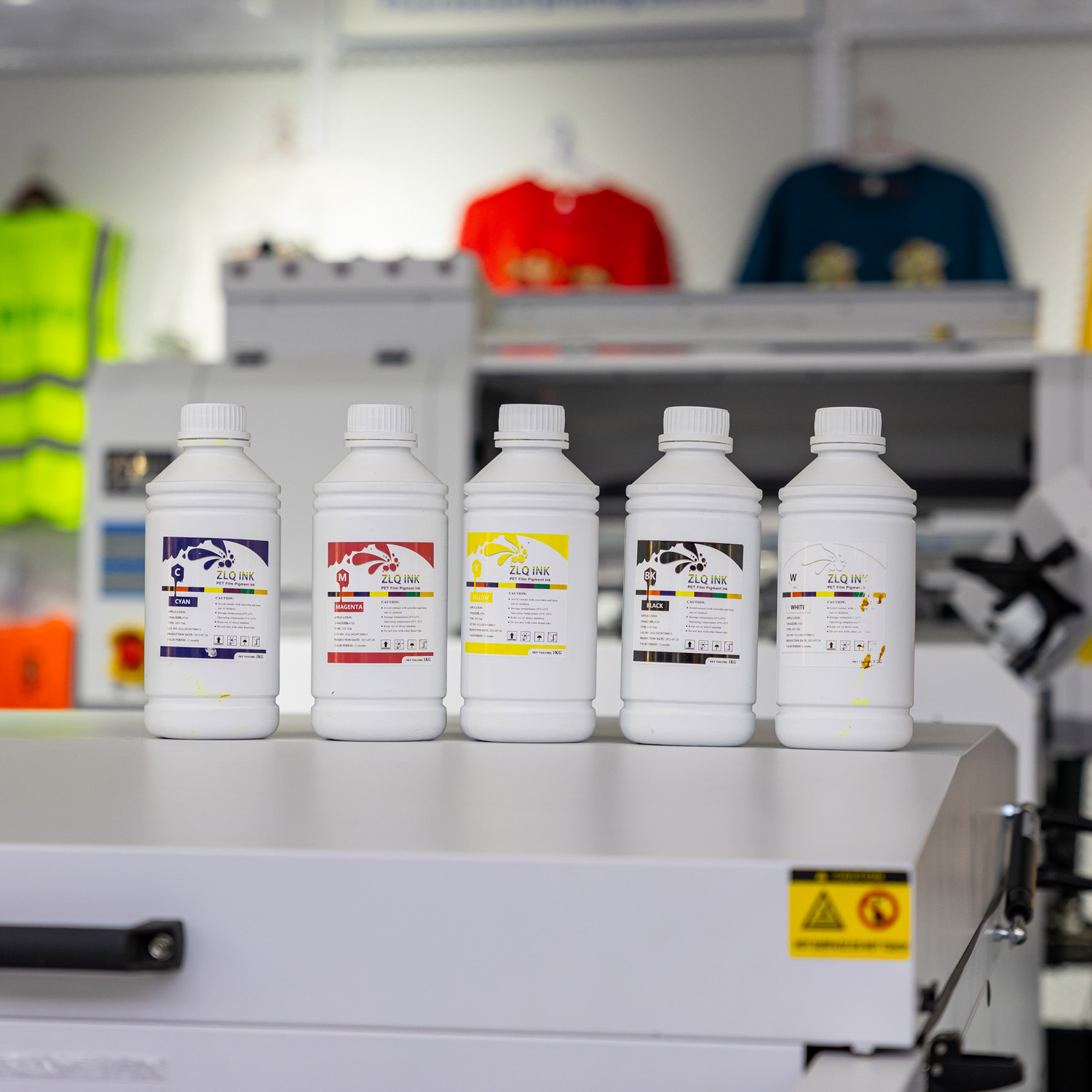
1. Design Peeling or Wearing
These problems occur when the ink does not adhere well to the material. It does not stamp on the material properly. The ink also does not soak well. Therefore, it produces a very poor print that does not adhere to the material. This problem usually leads to a shorter life of the print. It also results in a poor product quality.
Solution: The ink density can be changed to increase the penetration of the ink in the printer. Pre-treatment can also be done.
2. Ink Bleeding
This occurs when the ink exceeds the design area. This problem usually results in a blurry or unclear print.
How to Fix:
Reduce the amount of ink in the printer, while also making sure to improve the accuracy of the print, the less ink used, the better the diffusion, also adjust the parameters of the printer, the clarity and sharpness of the print will also increase.
3. Smudges
This problem is usually caused by the ink not being able to dry properly. It can also be caused by applying too much ink. This problem usually occurs when the pattern printed on the paper looks blurry or stained. This reduces the quality of the print. This will make it look quite amateurish.
How to fix: It is recommended to adjust the heat and pressure to achieve proper curing. Save paper by adjusting the margins of the printed document. You should also find ways to reduce the ink as it may cause smudging. It is recommended to check the heat transfer several times.
4. Color inconsistency
This problem usually occurs when the ink is not mixed properly. In some cases, the printer is not calibrated properly. The result will be uneven or faded colors. The accuracy and vividness of the design will be affected.
How to fix: Make sure the ink is mixed evenly before printing and adjust the printer settings if necessary. Proper calibration is important to control the color and prevent color differences from occurring so that the final work is bright and clear.
5. Ghost printing
This happens when the material moves while printing. Also, if another layer of color is applied when the first layer of color is not dry. This will cause the image to be blurred, distorted or repeated.
How to fix: Use a stronger clamp to clamp the material. This way, you will get the correct position during the printing process. You should also give it enough time to dry before making the next print. This way, you can avoid contamination. The accuracy of the result will also increase.
6. Print head clogging
Print head clogging is caused by dried ink or other residues. This will cause gaps or streaks in the print. If you ignore it, serious problems will arise. It may cause your printer to not print uniform images.
How to fix: Perform regular nozzle tests. This is to determine if the nozzles are clogged. You should also clean the print head regularly. In addition, make sure to use high-quality ink. High-quality ink contains less foreign matter and will not cause clogging. The ink cartridges should also be cleaned regularly to extend the life of the print head.
7. White ink problem
This is a situation where the white ink appears gray or does not print at all. This usually occurs if the white ink is not mixed evenly. It can also be caused by an uncalibrated printer.
How to fix: Stir the white ink every day to prevent the pigment from settling at the bottom. Make sure the white ink is well calibrated on the printer for the best results. Using high-quality white ink can also prevent this. Maintaining the ink cartridges from time to time can also prevent this.
8. Solid color blocks
The solid color blocks are uneven and have obvious water ripples or lines. This may be caused by the waveform setting. It may also be caused by poor nozzle alignment or ink quality.
How to fix: Modify the step parameters, increase the tension, and check the ink. Adjust the physical position of the nozzle to align it with the target. This means it is appropriate to keep a sample print when setting up the machine. Before printing, the machine is properly set up with the correct waveform; if there is a problem, it can be modified.
9. Red ink problem
Sometimes the ink is red, but the distribution is uneven, which is a nozzle problem.
Replace the red ink nozzle with a white ink nozzle. It is recommended to use a milky white powder to further reduce the amount of white ink while achieving the same effect. This can reduce the amount of white ink used while maintaining print quality.
Conclusion
Possible problems with DTF printing include ink smearing, poor adhesion, and print head clogging. However, most of these problems can be avoided if the equipment is well maintained, calibrated, and fine-tuned. If these problems are resolved as soon as possible, your DTF prints will be effective and produce high-quality results.
ZLQ's DTF printers are suitable for both beginners and professionals in this field. You can check out A3 DTF and 60 DTF.
Contact us via WhatsApp or leave a message to let us discuss further.
+86 166 2768 2730